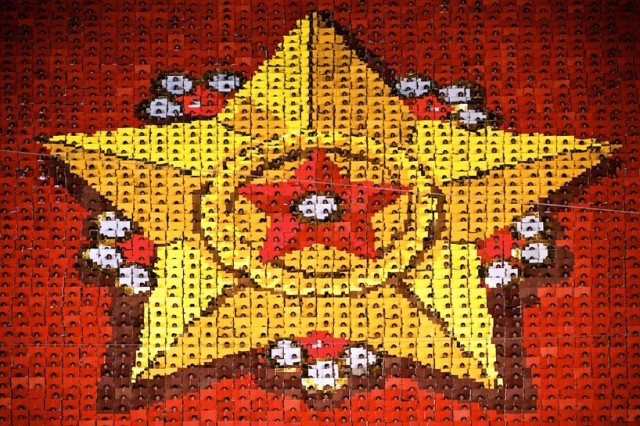Many of the musical
traditions in North Korea today has stemmed from its own folk traditions but
has changed drastically since the two Koreas split apart in 1945. For the most
part, the types of music heard after Kim Il-sung took over in 1948 were highly
restricted. Most of the genres allowed had to follow the strict guidelines of
supporting the regime and upholding the idea of juche. A type of patriotic song
called taejung kayo emerged in the 1980s. Basically it combined traditional
Korean folk tunes with Western classical styles. Marches, Western instruments,
and choirs were heard as well. Genres like jazz and rock were strictly not
allowed. Movie music was quite popular, though. One of the leading film score
composers was Isang Yun, who was born in South Korea but ironically lived most
of his life in Germany.
Many of the folk
instruments have been adapted and tuned in order to perform alongside Western
instruments; many modern ensembles do this. They also have instruments that
remain in folk tuning in order to perform with traditional ensembles. One
instrument that has been modernized is a type of zither called an ongnyugeum. A
four-stringed fiddle called a sohaegeum is another. Other instruments heard in
traditional music include the gayageum (a 12- to 21-stringed zither), the
ajaeng (a type of zither played with a bow), and the janggu (a type of
double-head hourglass-shaped drum).
North Korea is
famous for what they refer to as its “mass games” called Arirang Festival. If
you watched one of the videos I posted a few days ago like you should have
(Inside North Korea Part 3, I believe), it shows part of the mass choreographic
display of Arirang. Think of it like a cross between an Olympic opening
ceremony, a dance recital, and a gymnastics competition. Thousands of
performers fill a stadium on the floor and in the stands and do amazing feats
of coordination. It’s quite something to see, even though they are chanting their
praises to Kim Il-sung, the government, and the ideology of juche. (That’s
great and all, but can they do the wave?)
 |
| If you look closely, those are people holding up colored cards to make the picture. |
When Kim Jong-il came
to power, he lightened up on the musical restrictions of his father and
predecessor. He actually encouraged jazz music and other genres that previously
were shunned, and even allowed Korean pop music and girl bands. However, the
songs still had to pass the juche test. Film music remains popular to this day.
There’s not a lot
to write about when it comes to modern popular music. In recent years, there
have been some pop music come onto the scene, inspired in part by the more
dominant South Korean pop music scene. Several years ago, Kim Jong-un himself
handpicked 16 women to form North Korea’s first girl band called Moranbong
Band. Many of the members perform in some kind of military uniform while the
singers appear in sleek dresses. Because of North Korea’s extremely high level
of music education, all of the women here play their own instruments. The music
is mostly in a pop/dance style with overtones of 80s music.
I haven’t come
across any rock or any other styles so much, and it’s not surprising that I
haven’t. I think it’s baby steps for them right now. There are a number of
orchestras, choirs, and bands like the Wangjaesan Light Music Band. That’s
about as good as we’re gonna get on this.
Up next: the food

No comments:
Post a Comment